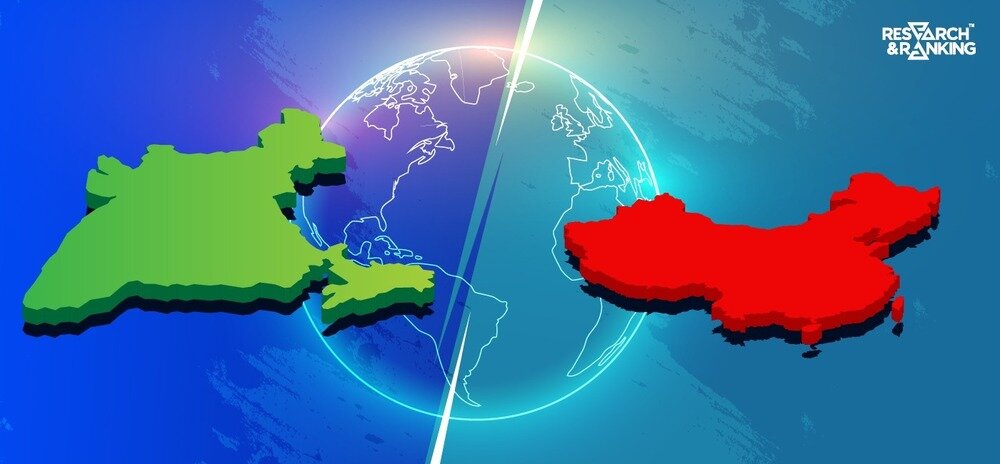Introduction
The International Monetary Fund (IMF) has predicted that the Asia-Pacific region will experience a growth of 4.6% in 2023, and India and China will play a significant role in contributing to half of the global growth.
In particular, India’s GDP is expected to grow in 2023 and 2024, driven by a rebound in consumption, investment, and government support measures. China’s GDP is also expected to grow in the same period, with a rebound in exports, infrastructure spending, and private consumption being the main drivers.
The growth of India and China is critical to global growth, given that they are the world’s two most populous countries with large consumer markets. In addition, both countries are major exporters and have significant global economic influence. Moreover, the growth of India and China can have a ripple effect on other countries in the region and beyond.
IMF predicts India’s GDP growth could rebound in FY24
According to the International Monetary Fund, India’s GDP is projected to grow in 2023 and 2024, with a rebound in consumption, investment, and government support measures driving the country’s growth.
India’s economy expects to expand rapidly, driven by strong domestic demand, a revival in exports, and increased government spending. The IMF has raised its growth projections for India and sees its economy rebounding from the pandemic-induced contraction.
The report also states that China is expected to lead the global recovery, contributing significantly to global growth in the coming years. As India and China’s contributions to global development increase, the Asia-Pacific region is expected to contribute 70% of global change.
This development is significant for the global economy, as the region’s growth expects to positively impact the global economy, driving economic recovery and growth. The IMF’s projections for India’s growth highlight the country’s potential to drive global economic growth as it continues to recover from the impact of the pandemic.
The Indian GDP growth rate has fluctuated from 2019-20 to 2023-24.

This growth indicates that the Indian economy is gradually recovering from the pandemic-induced slump, and it expects to show a strong rebound in the upcoming quarters.
IMF Expects China’s GDP to Grow in 2023-24, Boosting Half of Global Growth Along with India
This effect comes after the Covid-19 pandemic plunged the world into an economic crisis, with governments scrambling to mitigate the damage.
According to the IMF’s projections, China has weathered the storm and expects to play a significant role in the region’s economic growth. The country’s GDP intends to grow in 2023 and 2024, driven by a rebound in exports, infrastructure spending, and private consumption.
China’s GDP growth rate has fluctuated from 2019 to 2024.

Additionally, India also hopes to contribute significantly to the region’s growth. This growth forecast is good news for the world economy, which is struggling to recover from the pandemic’s impact.
Why India and China are critical to global growth?
The IMF expects India and China to contribute half of the world’s economic growth in the near future. As the world’s two most populous nations with massive consumer markets and significant export capabilities, India and China significantly impact the global economy.
Challenges for India and China’s Economic Growth
Despite significant contributions to global economic growth, India and China face substantial challenges. India, in particular, is struggling with high inflation, mounting debt levels, and a weak banking sector. These issues could impede the country’s economic progress and limit its contribution to global growth.
However, the International Monetary Fund (IMF) predicts that India and China could still account for half of global growth in the near future, underscoring the importance of these two economies to the global economy.
While China is grappling with challenges such as an aging population, income inequality, and environmental degradation, India’s ability to overcome its obstacles will be crucial to sustaining its economic growth and continued contribution to the world’s economy.
India and China: Opportunities in Manufacturing and Innovation
While both countries face significant challenges, they also have opportunities to drive their economies forward. For example, India has the potential to become a global manufacturing hub and attract foreign investment, particularly considering the recent policy reforms aimed at increasing the ease of doing business.
In addition to manufacturing, India has a rapidly growing service sector and a young, tech-savvy population that is driving innovation and entrepreneurship. Meanwhile, China is investing heavily in technological innovation and shifting towards a consumption-driven economy, which could increase import demand from India and other countries.
Since China faces several challenges, India can capitalise on the opportunity to emerge as a critical economic powerhouse. It has the capacity to create jobs and drive growth not just within its borders but around the world too.
Final Words
The IMF predicts India and China to contribute significantly to global economic growth in 2023 and beyond. Whether both countries can overcome the challenges and gain from their opportunities is to be determined.
FAQs
How does India’s economic growth compare to other countries in the Asia-Pacific region?
The IMF predicts that the Asia-Pacific region will grow by 4.6% in 2023, and India’s projected 6.5% growth rate is higher than the regional average.
What are some factors contributing to India’s economic growth?
Several factors drive India’s economic growth, including government reforms to attract foreign investment, a growing middle class with increased purchasing power, and a burgeoning tech industry. Furthermore, India’s large population and relatively low labor costs make it an attractive destination for businesses seeking to expand.
How does India’s economic growth compare to China’s, and what factors drive their growth?
India’s projected economic growth rate in 2021 is 12.5%, higher than China’s expected growth rate of 8.5%. Factors driving India’s growth include structural reforms, government spending, and a rebound in consumer spending, while exports and government stimulus drive China’s growth.
How useful was this post?
Click on a star to rate it!
Average rating 5 / 5. Vote count: 3
No votes so far! Be the first to rate this post.

